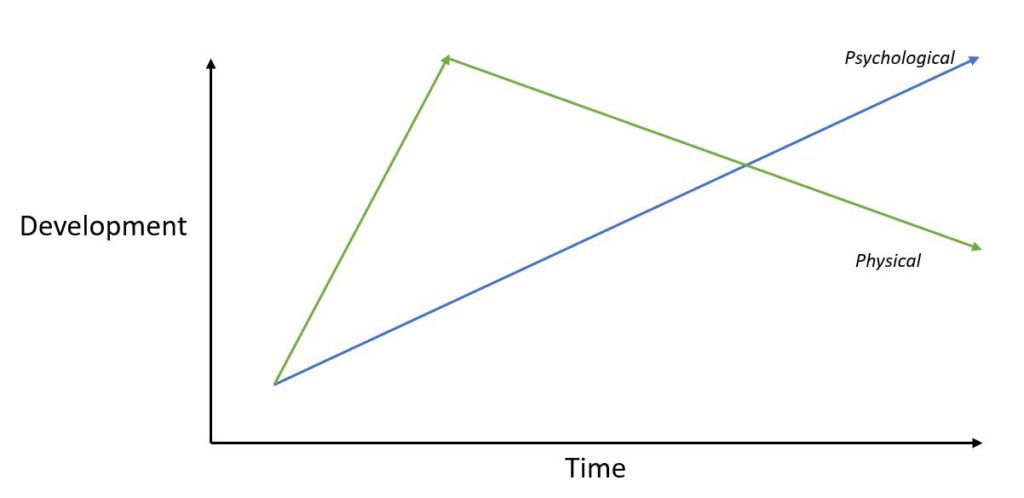Have you ever wondered why authentic martial artists exude an air of balance and harmony? The reason I specify "authentic" is that only a few actually commit to the Physical and Psychological aspects of the practice and become experts in the field. Realistically, training in martial arts only begins after achieving the Black Belt rank, as anything before that is considered preliminary training.
It's all "Physical and Psychological (P'n'P)" - that's how I would like to sum it up.
The art of Shotokan Karate-Dō has long been revered for its ability to cultivate both physical and mental wellness. At the core of this ancient martial arts system lies the idea that true mastery is not only about mastering the physical techniques, but also about achieving a state of inner balance and harmony. For this reason, authentic martial artists who follow through with the Physical and Psychological (P'n'P) aspects of training are well-balanced individuals who have become subject matter experts.
When studied and practiced in depth, this martial arts system is revered for its ability to deliver various means of self-improvement that promote a healthier way of life. Through its discipline, Shotokan Karate-Dō encourages practitioners to give back to society while constantly developing both physical and psychological areas as they progress towards their goals.
The practice of Shotokan Karate-Dō has gained significant traction in Australia in recent years, as people become increasingly aware of the wonderful benefits it has to offer. Some of the most significant physical benefits of Karate-Dō include improving cardiovascular health, body balance and coordination, reflexes and speed, weight control, flexibility, agility, strength, fitness, endurance, and stamina.
In addition to the physical benefits, Shotokan Karate-Dō also offers a wealth of psychological benefits. Through its practice, individuals can become less impulsive, mentally prepared, disciplined, subjective, humble, and emotionally controlled. Practitioners also build commitment, self-confidence, calmness, and the ability to combat stress and anxiety. Additionally, the practice of Shotokan Karate-Dō can foster a feeling of inner security, improve concentration and self-control, increase instincts, and enable clearer thoughts and decisions. Martial artists are also trained to perform under pressure and reduce aggression.
In conclusion, Shotokan Karate-Dō has proven to be a valuable practice that can contribute to one's overall physical and psychological well-being. Through its practice, individuals can cultivate both their inner and outer strengths, ultimately leading to a better quality and way of life.
The P 'n' P Benefits of Martial Arts
The P 'n' P Benefits of Martial Arts
As a Martial Arts practitioner with expertise in both Shōtōkan Karate and Muay Thai, I can attest to the fact that when practicing Martial Arts in the right manner, you are bound to experience a multitude of physical advantages, along with a boost to your mental wellbein
While every individual's Martial Arts journey is unique and can take various paths, I have come to believe that there are three fundamental phases that are likely to occur in one's progression:
1.Beginning
The Beginning Phase marks the initial steps you take when embarking on your Martial Arts journey. It is an exciting period when you get to familiarise yourself with the discipline, its techniques, and its underlying philosophy. It is a time of growth and self-discovery as you become increasingly aware of your body, your strengths, and your limitations. During this phase, you also establish your training routine and cultivate your focus and dedication towards achieving your goals.
Peak
The Peak Phase is where you attain your highest physical potential and mental fortitude. It is the time when you see the fruits of your labor and the growth that has transpired. You will likely have reached advanced levels in your technique and skill, have honed your body to perform at its highest level, and have developed discipline and willpower to sustain rigorous training. This phase can be the pinnacle of your Martial Arts journey, where you experience great satisfaction in your accomplishments.
Maturity
The Maturity Phase is where you witness a natural decline in your physical ability due to the aging process. However, this is also a time when your mental knowledge and wisdom can continue to flourish. During this phase, you will continue to practice Martial Arts with a focus on adapting and modifying techniques to suit your changing physical capabilities. This phase is about finding balance and harmony between the physical and mental aspects of the practice, and using the acquired knowledge to impart wisdom to the next generation of Martial Arts enthusiasts.

In conclusion, while the Martial Arts journey can be different for everyone, these three phases are almost inevitable, and they represent distinct and significant stages of growth and transformation. Whether you are just starting or you have been practicing for many years, these phases serve as a reminder of the essential elements of progress and development in the Martial Arts discipline.


